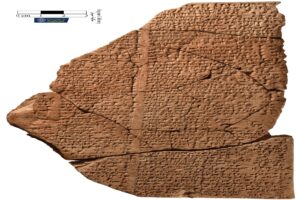Start excavating a site known as Hangman’s Hill, and you’re likely to find some interesting tidbits. Particularly if the hill in question is located on an island in the Baltic Sea — an area of strategic importance to civilizations for thousands of years.
So when Polish archaeologist Wojciech Filipowiak went to dig around Hangman’s Hill in advance of a planned construction there, he thought he might find some history — perhaps relics from the nearby town of Wolin’s long history.
What he wasn’t expecting was evidence of, as The New York Times put it, “a 10th-century stronghold that could help solve one of the great riddles of the Viking Age.”
A little backstory
Though the Western European raids are more famous, Slavic communities along the Baltic Sea were plentiful in trade goods and potential slaves, and the people who’d later be known as Vikings weren’t about to pass that up.
According to historical sources, the Vikings established a permanent fortress somewhere in Poland to better access these riches. Most sagas agree that legendary Danish king Harold Bluetooth founded Jomsborg, as it was known, in the 960s. The settlement was famous for its (possibly mythical) Jomsvikings — a group of specialized mercenary warriors famous for their battle prowess even amongst their fellow soldiers.
“Possibly mythical” is always the phrasing when it comes to Vikings. The warrior farmers (or was it farmer warriors? It’s up for debate…) had a habit of recording their histories in the form of oral sagas, many of which were only written down centuries after the events they depict ostensibly occurred.

A 12th-century fragment of the Heimskringla, one of the sagas that mention Jomsborg. Photo: Wikimedia Commons
Jomsborg supposedly burned down in 1043, destroyed by rival Dano-Norwegian King Magnus the Good. Folks have been searching for it more or less ever since, unsure if it ever actually existed.
Back to the present
That could all change thanks to Filipowiak’s find: enough charcoaled wood of the correct age to indicate that a large fortress once existed, and was destroyed, in the area.
Excavation is ongoing, but Filipowiak, a Wolin resident associated with Poland’s Academy of Sciences, has a good feeling about it. He told The New York Times he has “80 percent certainty” that after a thousand years, Jomsburg has been found.

Historical recreations juxtaposed with modern buildings in Wolin, Poland. Photo: Shutterstock
“[It’s been] a very long discussion,” the scientist said in reference to the ongoing Jomsburg debate. “Hopefully I can help end it.”






